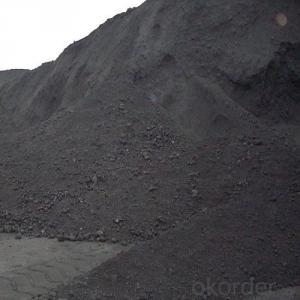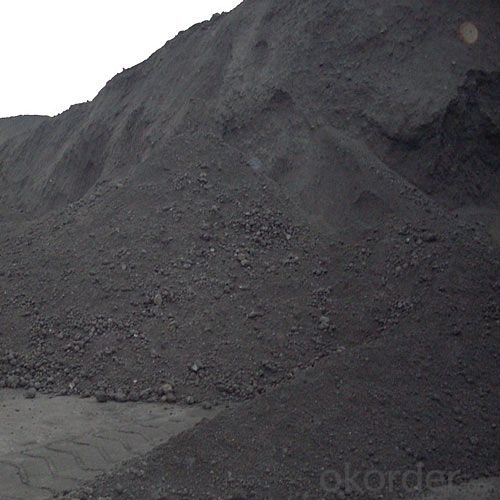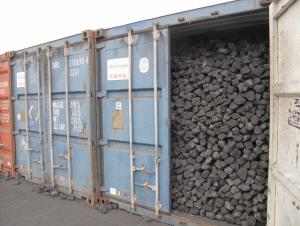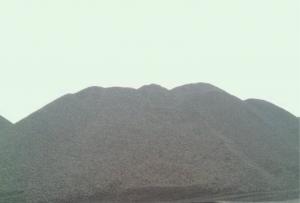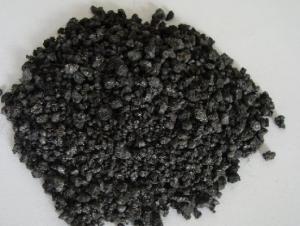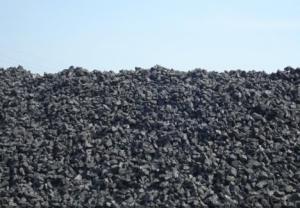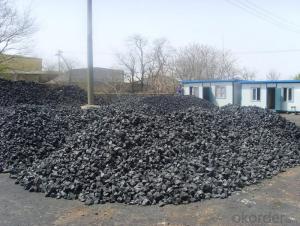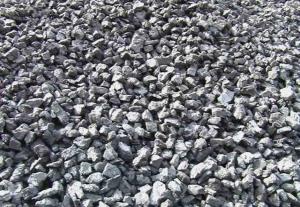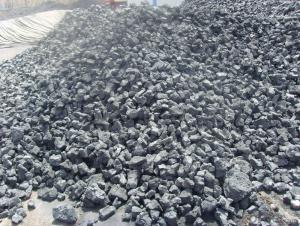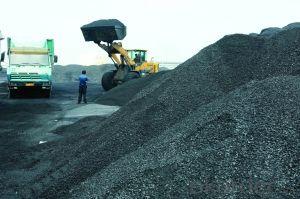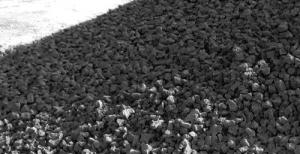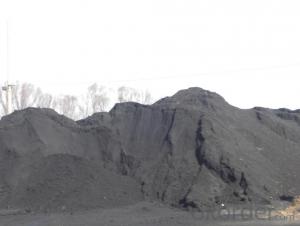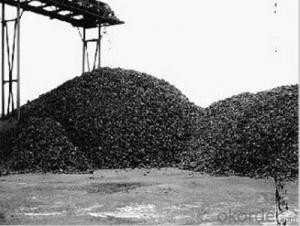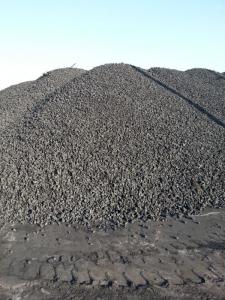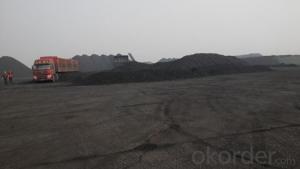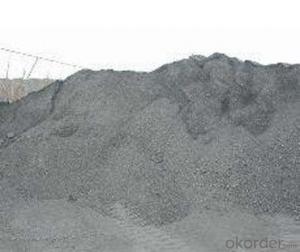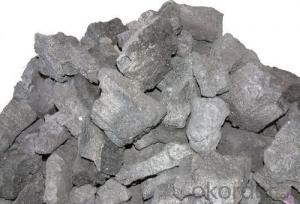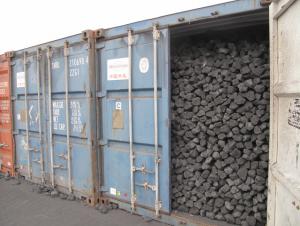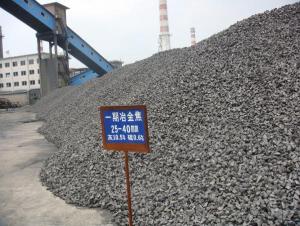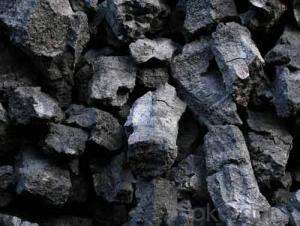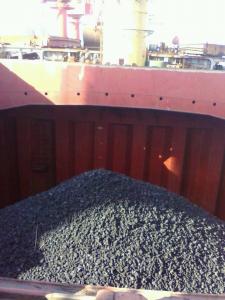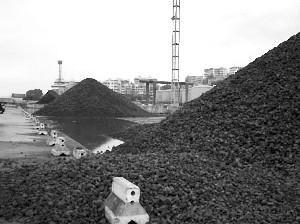NUT COKE of 10 -30mm
- Loading Port:
- Tianjin
- Payment Terms:
- TT OR LC
- Min Order Qty:
- 1000 m.t.
- Supply Capability:
- 100000 m.t./month
OKorder Service Pledge
OKorder Financial Service
You Might Also Like
1. Structure of Metallurgical Coke of Coke Strength after Reactivity 65 Description:
Coke is made by high temperature metallurgical coke for blast furnace smelting, casting and gasification. Occurring in the process of coking after recovery and purification of coke oven gas is a high calorific value of fuel, is an important industrial raw material in organic synthesis.
Bituminous coal under the condition of the air, heated to 950-950 ℃, after drying, pyrolysis, molten, bonding, solidification and contraction phase resulting coke, this process is called high temperature coking (high temperature carbonization).Made by high temperature metallurgical coke for blast furnace smelting, casting and gasification.Occurring in the process of coking after recovery and purification of coke oven gas is a high calorific value of fuel, is an important industrial raw material in organic synthesis.
2. Main Features of the Metallurgical Coke of Coke Strength after Reactivity 65:
• Quality assurance
• Mutual benefit
• Preferential price
• Various choice
3. Metallurgical Coke of Coke Strength after Reactivity 65 Images:
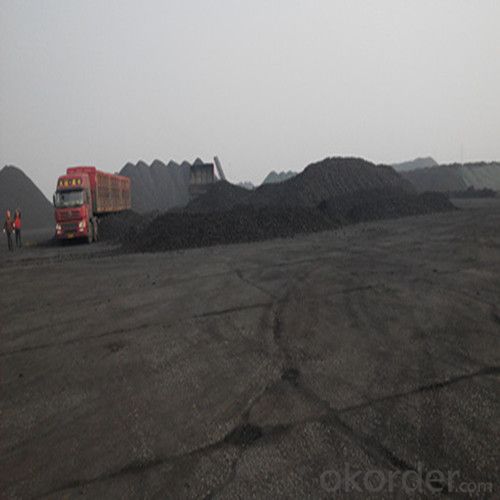
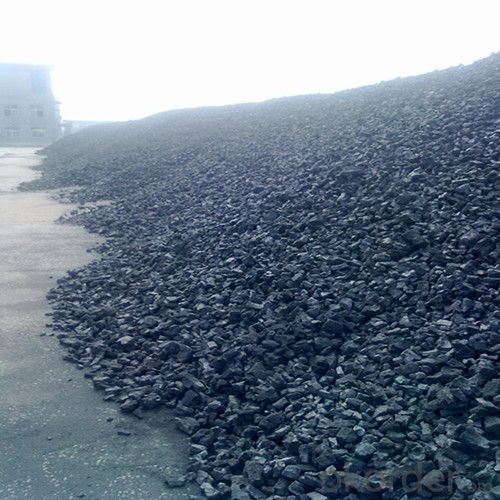

4. Metallurgical Coke of Coke Strength after Reactivity 65 Specification:
Parameters | Guarantee | Rejection |
Total Moisture (As received basis) | 5% max | |
Ash (dry basis) | 12.5% max | > 13.5% |
Volatile Matter (dry basis) | 1.5% max | > 1.8% |
Sulphur (dry basis) | 0.65% max | > 0.75% |
Phosphorus (dry basis) | 0.035% max | > 0.045% |
M10 | 7% max | > 9% |
M40 | 84% min | <82% |
CSR | 64% min | <62% |
CRI | 26% max | > 28% |
Size 30-90 mm | 90% min | |
+90 mm | 5% max | > 8% |
-30mm | 5% max | > 8% |
5. FAQ
How about your company?
Our company began to export coke when China cancelled 40% of coke export tariffs and quotas on January 1, 2013. We export many kinds of coke, such as CSR60 % and CSR 62% metallurgical coke (met coke), the NUT coke of 20 to 50 mm, coke breeze of 3 to 6 mm, and so on.
- Q: Standard grade two grade coke standard
- 2, the phosphorus in the coke: iron metallurgical coke coke content should be in the following 0.02 - 0.03%.3, the ash content of coke: Coke Ash on the impact of the blast furnace smelting is very significant. Coke ash increased by 1%, coke consumption increased by 2 - 2.5%, therefore, the reduction of coke ash is very necessary.4, volatile in coke: according to the volatile content of coke can determine the maturity of coke. Such as volatile content is greater than 1.5%, is said to produce coke; volatile less than 0.5 - 0.7%, it is said to be overdone, the general maturity of metallurgical coke volatile is divided into about 1%.
- Q: What is the concept, relationship and difference between coke and coke? The main difference and contact, thank you
- Metallurgical coke is coke, coke, iron alloy coke and non-ferrous metal smelting coke ". Since more than 90% of metallurgical coke is used for blast furnace ironmaking, it is often referred to as coke. Coke is a special and molten iron cupola coke. Coke is the main fuel cupola molten iron. Its role is to melt the burden and make the hot metal overheating, the support column to maintain good ventilation. Therefore, the foundry coke should have large blocks, low reactivity, porosity is small, with impact crushing strength, low ash and sulfur enough.
- Q: What are the indicators of first grade coke and the two grade coke?
- Two level 12.01-13.50 0.61-0.80 not less than 76 not greater than 9 not greater than 1.9Three level 13.51-15.00 0.81-1.00 not less than 72 not greater than 10 not greater than 1.9
- Q: What is the reasonable standard of volatile content of coke
- Generally speaking, the volatile content of coke is about 1.5 or so, but not more than 2
- Q: Who knows the proportion of pig iron and coke used in Cupola
- There are doubts: blank parts output is too low.3, blank export rate: raw materials into melting after the formation of blank, under normal circumstances, the common casting investment for every 1 tons of pig iron, scrap steel and other major raw materials, the lowest to 85% iron, after casting output blanks, nozzle, nozzle, riser, riser for iron smelting water ratio of about 30%; blank standard export rate, nozzle, riser re melted continue after put into use; production enterprises invested 1 tons per dryer, iron scrap and other major raw materials to the lowest 85% of the hot metal, roughly the same with ordinary casting, casting blank after the (standard yield) for hot metal ratio is about 70%, water riser for hot metal ratio is about 15%, and the same outlet riser re melted after continued use.
- Q: What is the amount of waste gas produced by a ton of coke burning
- Process for producing coke, coke oven gas and coking chemical products by thermal decomposition and coking.
- Q: Braised meat burning coke, iron black layer, I do not know how to clean, please help answer
- If the paste pot may wish to try the following several waysBrush pot1, with hot water can be, it is easy to wash, do not use wire brush the ball, put the pot brush bad, if it is aluminum brush used for cooking after eating on the body is very good. (if you must brush it, you can use the cloth to replace the steel ball)
- Q: What is the difference between coke and semi coke in ferrosilicon smelting process? In the process of energy statistics in the end should be 0.9714 of the conversion coefficient should be used with the conversion coefficient of 0.75 x 0.9714, please expert advice? emergencyUrgent!
- The difference between them is that the final temperature of the two, the use of different raw materials, product yield and product properties are not the same. Low temperature coke. Under the condition that the coal is isolated from the air, the product is heated to 500 to 600 DEG C to obtain the product. It uses the raw coal is lignite, metamorphic degree of coal, long flame coal and gas coal. The final purpose of the low temperature carbonization is to obtain high yield coal tar
- Q: Coke in the whole process of steelmaking in the end is what to do, just to provide heat or carbon and other substances into steel or iron?In the study of coal classification inside, one is divided into coking coal, coking coal and coke as main, and then you see is steel or iron coke must material. What is not clear. In the end, out of coal mining is mainly used to burn energy extraction, or said that coal like oil can be converted into other products, which is a coke can convert?
- It is necessary to add coke, pellet, sinter ore, ore and other materials into the blast furnace in a certain proportion, batch and sequence, and then to produce molten iron in the reducing atmosphere of the blast furnaceAfter the hot metal to steel in converter against the general converter, scrap also need to add a certain amount of used to balance the heat. Hot metal and scrap are added to the converter after the oxygen lance for oxygen operation, the oxidation of oxygen to carbon in liquid iron, silicon, manganese, phosphorus, sulfur and some non-metallic inclusions to form steel. Adding lime, dolomite, iron oxide and mine slag and coolant is needed in oxygen at the same time. After the completion of steel smelting in the tapping process according to different requirements with the corresponding iron alloy steel, after also refining process.
- Q: In the coke analysis index, M40% and M25% respectively mean what?
- (1) crushing strength (shatter strength): the ability of a certain particle size coal sample to fall under the condition of free fall.
Send your message to us
NUT COKE of 10 -30mm
- Loading Port:
- Tianjin
- Payment Terms:
- TT OR LC
- Min Order Qty:
- 1000 m.t.
- Supply Capability:
- 100000 m.t./month
OKorder Service Pledge
OKorder Financial Service
Similar products
Hot products
Hot Searches
Related keywords
